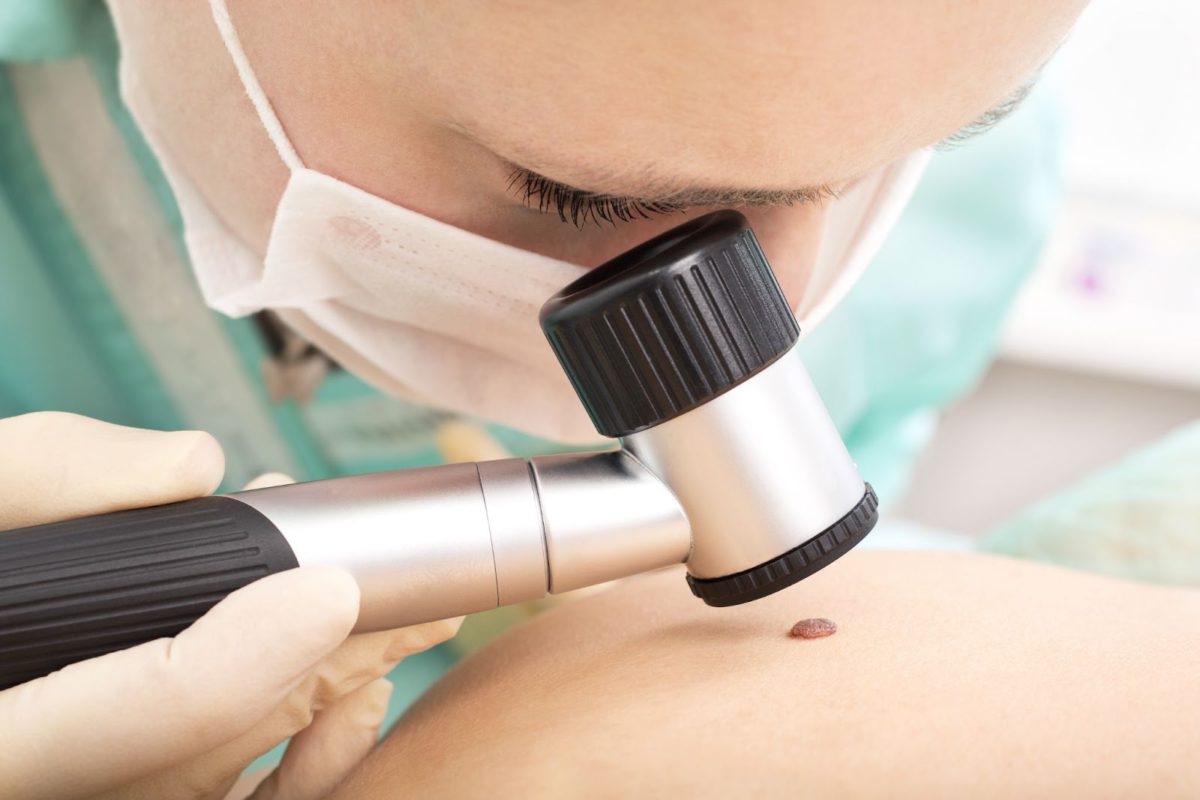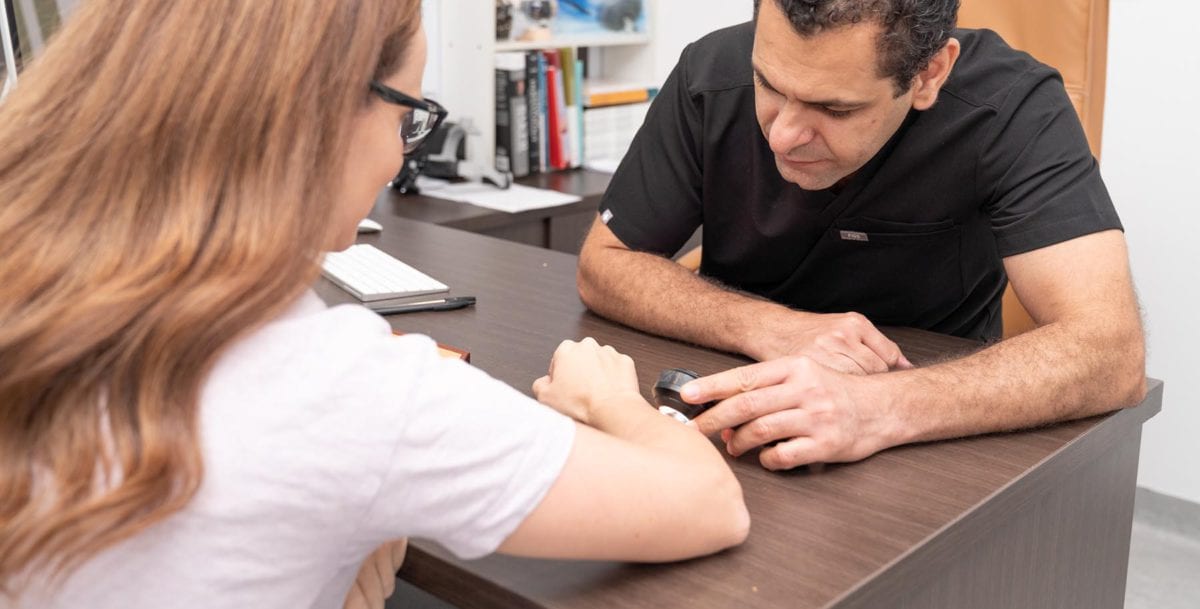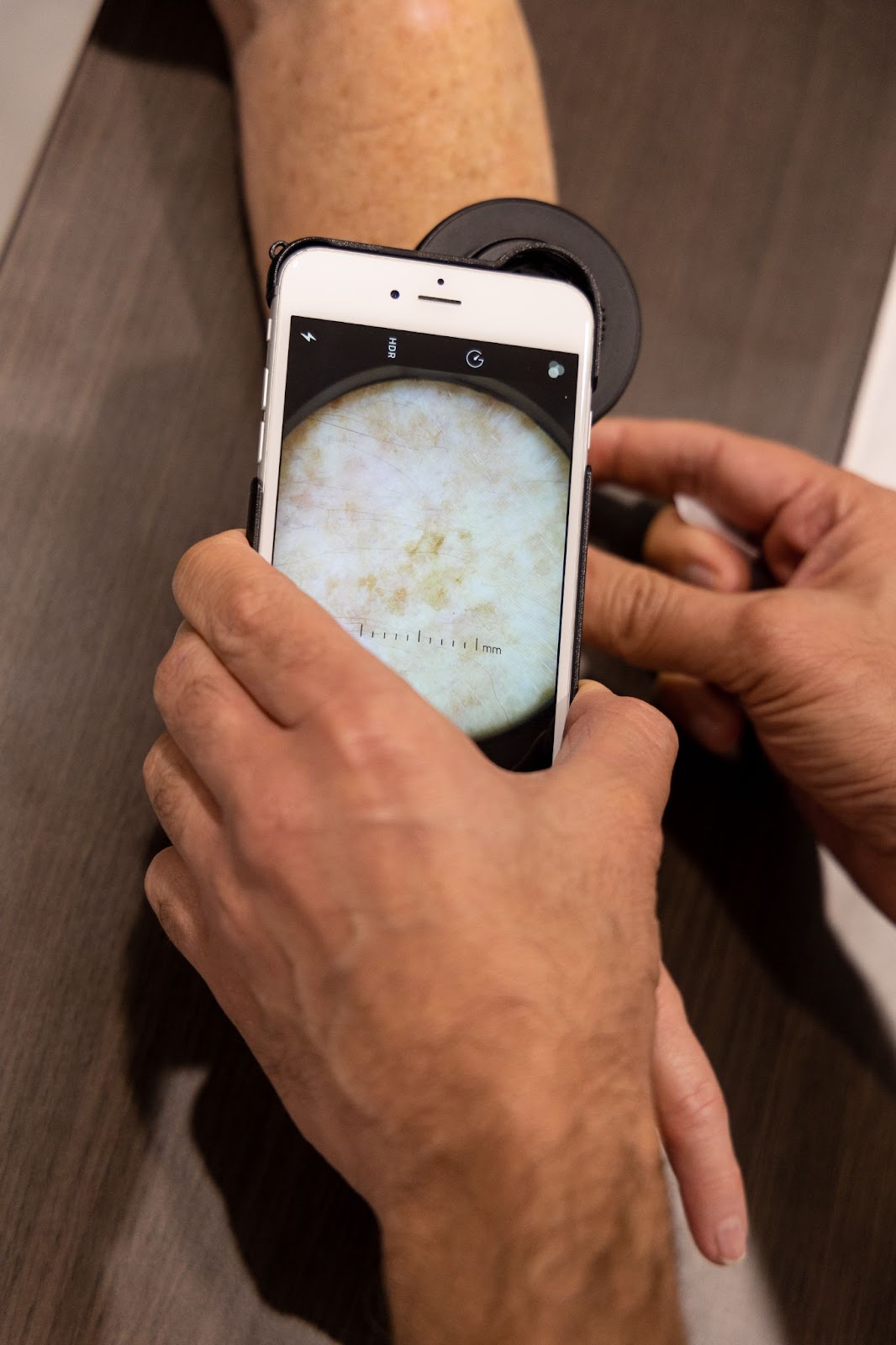Skin Cancer Management Maitland
A full body skin cancer checkup includes a thorough head to toe skin and mole check. Every mole and spot on the body is examined using magnification with a skin examining instrument called dermatoscope.

Photographs of any concerning or suspicious skin lesions can be taken using the dermatoscope attached to the camera.
Following the skin cancer check up, the skin lesions with high suspicion are biopsied and sent for further testing in the pathology laboratory. For skin lesions with low suspicion, the digital photographs are good to track changes over a period of time.

Melanoma is the most serious form of skin cancer and can grow below the skin very quickly if left untreated. Melanoma is the third commonest invasive malignancy in Australia after breast and prostate cancer. Melanoma is fully treatable if it is completely excised before it goes in the bloodstream.

Checking your skin regularly can help you find melanoma early when it is highly treatable. The earlier the better, both for the treatment and the survival prospects. Most people who develop a melanoma survive their malignancy. See your doctor if you ever think you have a concerning skin lesion and examine your body for early signs of melanoma. Melanoma can affect you anywhere on your skin – from your scalp, hands to the bottom of your feet. Even if the area gets only a little sun, it is possible for melanoma to develop there.

The best way to find melanoma on your skin is by having a regular full body skin cancer checkup with your skin cancer doctor, and by checking your own skin every 2-4 months. A full body skin cancer check up is recommended on a regular basis depending on the risk factors, so that every high risk mole and spot on your body can be picked up at the right time when it is fully treatable.
In addition, a self checkup is recommended every 2-3 months, mainly to check if any skin lesions or moles have changed significantly in the last 2-3 months. Any significant change in shape or size or colour or any other form in a short period of 1-3 months should be taken as a warning sign to consult a skin cancer doctor.
